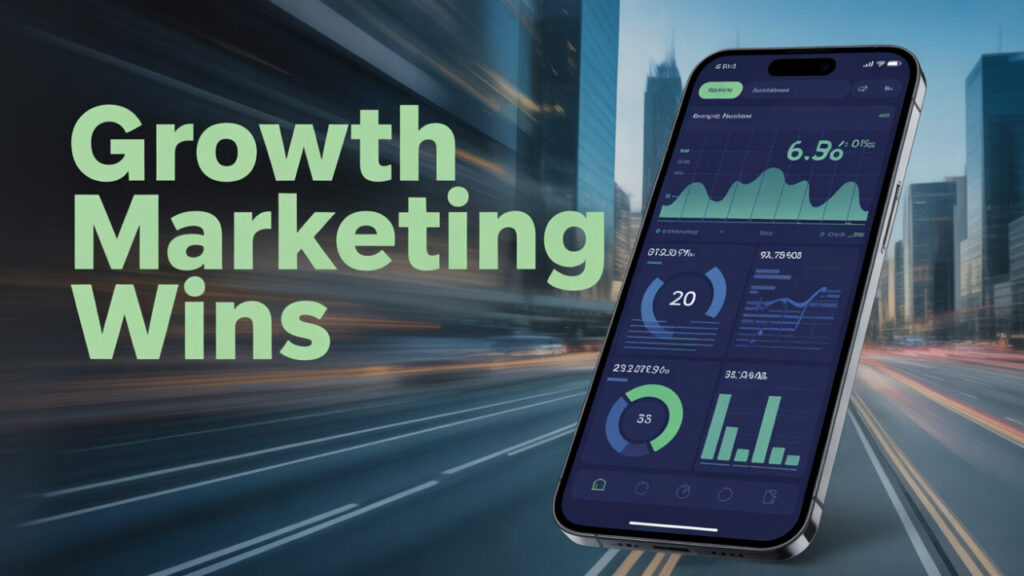Choosing between growth marketing and traditional marketing can feel overwhelming for any startup founder. If you’re wondering which approach is right for you, here’s the truth: growth marketing is designed for agility, experimentation, and measurable results, everything a startup needs to thrive. But traditional marketing still has its place in building brand awareness. Let’s explore how both work, their differences, and which one you should use to drive lead generation and sustainable growth.

Growth Marketing vs Traditional Marketing for Startups
At its core, growth marketing is about using data, creativity, and continuous testing to drive measurable growth. It focuses on every stage of the customer journey, from acquisition to retention. Think of it as a full-funnel strategy that uses digital marketing for startups, performance campaigns, and conversion improvement.
Traditional marketing, on the other hand, relies on tried-and-true techniques like print ads, billboards, radio, and TV. While these are excellent for brand awareness, they’re harder to measure and can be expensive, which is often a dealbreaker for early-stage startups.
Which Marketing Strategy Is Better for Lead Generation?
For most startups, lead generation is the top priority. Growth marketing shines here because it’s data-driven and focused on measurable results. With tactics like inbound marketing, paid ads, and A/B testing, startups can quickly identify what works and double down on those strategies.
Traditional marketing may reach a large audience, but it doesn’t offer the same level of precision targeting. This makes it less effective for direct customer acquisition unless you have a big budget to spend.
ROI Comparison Between Growth and Traditional Marketing
Growth marketing is ROI-focused. Every campaign is tracked, analyzed, and optimized to guarantee the highest returns. Startups benefit from ROI-driven campaigns because they can adjust strategies on the fly without wasting money.
Traditional marketing often requires a significant upfront investment, with results that are harder to measure. You get a lot of eyeballs on your campaign, but you won’t always know how many turned into paying customers.
Growth Hacking for Startups: Real-World Examples
Growth hacking, a popular branch of growth marketing, uses creative, low-cost strategies to achieve explosive growth. Consider Dropbox’s offering of free storage for referrals or Airbnb’s clever use of Craigslist integration in its early days.
These approaches work because they are scalable, repeatable, and focused on customer acquisition, perfect for startups looking to disrupt their industries.
How Startups Can Switch from Traditional to Growth Marketing
If your startup has relied on traditional marketing, it’s never too late to shift gears. Start by:
- Tracking metrics like CAC (Customer Acquisition Cost) and LTV (Lifetime Value).
- Investing in digital marketing for startups like social media ads, SEO, and email funnels.
- Running small experiments to see what channels drive the best lead generation results.
This transition enables you to reduce waste, increase agility, and scale growth faster.
FAQs: Growth Marketing vs Traditional Marketing
1. What is growth marketing?
Growth marketing is a data-driven, full-funnel approach that uses experimentation, digital channels, and analytics to accelerate business growth.
2. How is growth marketing different from traditional marketing?
Traditional marketing focuses on brand awareness through broad campaigns, while growth marketing emphasizes measurable results and conversion improvement.
3. Which marketing strategy is better for lead generation?
Growth marketing wins for startups because it allows precise targeting, tracking, and scaling based on real-time data.
4. When should a startup use traditional marketing?
Traditional marketing is best for established startups looking to build strong brand awareness at scale.
5. Is growth marketing only for tech companies?
No! Growth marketing works for any business willing to experiment and measure results.
Conclusion: Choosing the Right Approach for Your Startup
When it comes to growth marketing vs traditional marketing, startups looking for fast, measurable, and cost-effective lead generation should focus on growth marketing. It helps you test, learn, and scale quickly without blowing your budget.
Yet, as your company grows, traditional marketing can complement your efforts by boosting brand awareness. The smartest strategy often involves combining both. Start with growth marketing to make sure you get traction early. This approach helps build a solid foundation for sustainable success.









Leave a Reply